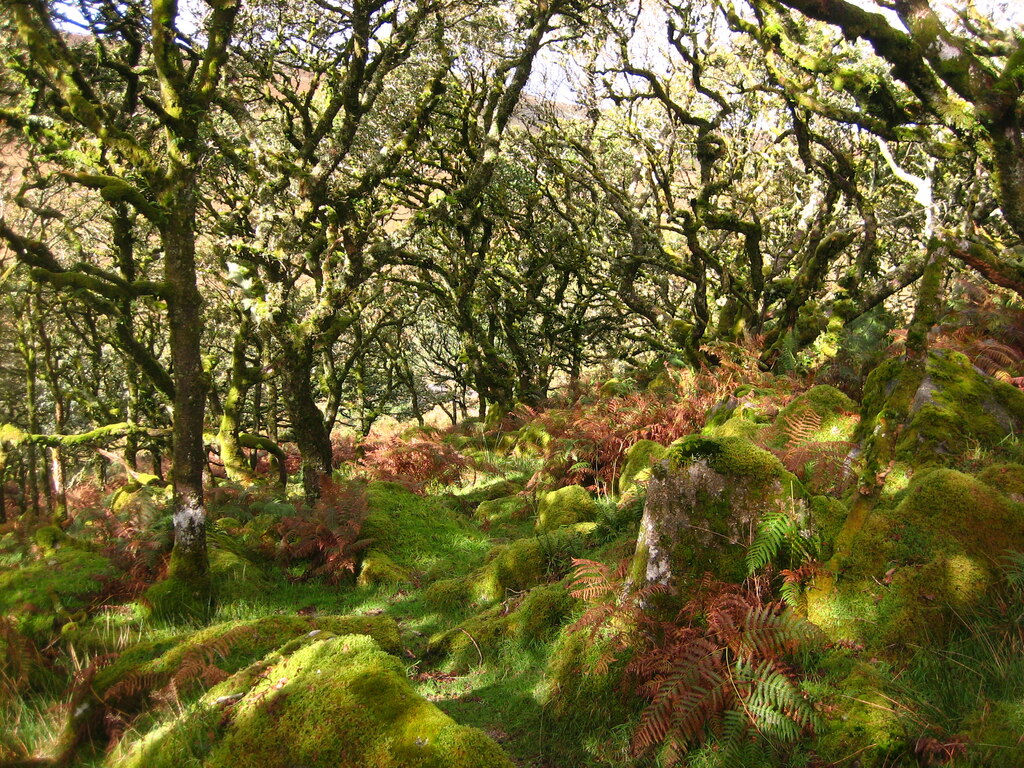The wood is one of the highest oakwoods in Britain and, as an outstanding example of native upland oak woodland, was selected as a Site of Special Scientific Interest in 1964. It is also an NCR site and forms part of the Wistman’s Wood National Nature Reserve.
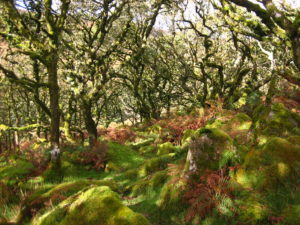
Quite apart from its importance as an outstanding natural environment, Wistman’s Wood is famous for its bizarrely shaped, twisted, gnarled trees, covered in layers of moss and lichens and standing amidst a tumbled area of granite boulders.
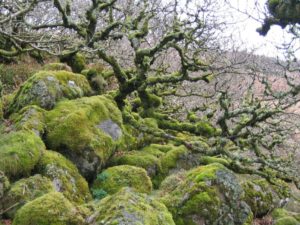
Wistman’s Wood is an ancient forest that has largely been left to grow wild, free of destruction or shaping by humans or large animals. This is largely due to the treacherous, rocky ground at the base of the trees which makes it difficult to traverse. The large, moss-covered boulders create countless small crevasses and places to trip and fall. With unfettered growth, the trees have grown old and gnarled. The rocks have stunted their height, and the crooked branches hang down in an oppressive canopy.
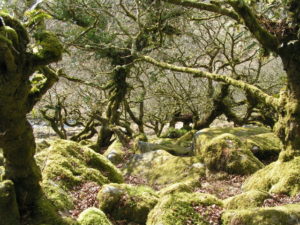
The forest is said to have been planted by druids. That helps explain the name, which may derive from ‘wise man’s wood’. Another darker, tale says that devil hounds dwell in the trees.
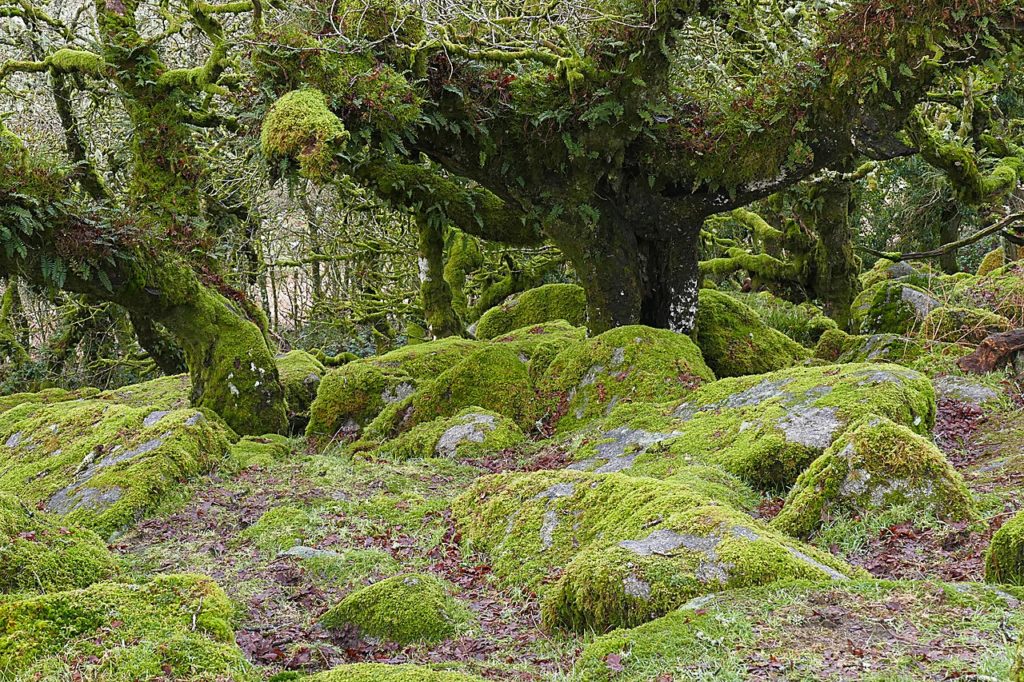
The hounds take the form of huge black dogs known as Wisht Hounds, with blood-red eyes. They emerge at night to roam the moors, searching for any humans foolish enough to be out after dark. They are sometimes led by the Devil and sometimes by an ancient Dartmoor spirit known as Old Crockern, who lives on the summit of nearby Crockern Tor.
According to the Internet





